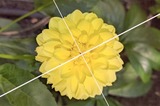
Applying Properties to Simplify Algebraic Expressions Algebra Readiness Remediation Plan
- Subject:
- Mathematics
- Material Type:
- Lesson Plan
- Provider:
- VDOE
- Author:
- VDOE
- Date Added:
- 10/07/2024

Applying Properties to Simplify Algebraic Expressions Algebra Readiness Remediation Plan

Learn about many ways to combine art and science as we observe the world around us. We often think of scientists as methodical and precise, and artists as free-willed, impulsive creators. But did you know that some art has science packed right into it? And that artists throughout history have helped scientists conduct their work? Learn about the photography of Berenice Abbott who documented the changing New York skyline with photographs of architecture and urban design of the 1930s, and science interpretation in the 1940s to 1960s. Learn how to use the sun to air dry your salt dough creations and explore papier-mâché.

Properties of Quadrilaterals Mathematics Instructional Plan

Video Description: Engineering design and technology development support scientific discovery. Learn about the roles engineers and scientists play when working together on NASA missions like the James Webb Space Telescope and how science and engineering take turns pushing each other to move exploration forward. Video Length: 4:16.NASA eClipsTM is a suite of online student-centered, standards-based resources that support instruction by increasing STEM literacy in formal and nonformal settings. These free digital and downloadable resources inform and engage students through NASA-inspired, real-world connections.NASA eClips Launchpad videos focus on NASA innovations and the technology that take us into the future. These segments support project-based and problem-based learning experiences in science, mathematics, and career and technical education classrooms.

Video Description: Each of us is made from star stuff. But how are stars formed? Take a closer look at the life cycles of stars and learn where stars come from, how they change, and what happens to stars when their lives come to an end. Find out about your connection to the cosmos. Video Length: 6:00.NASA eClipsTM is a suite of online student-centered, standards-based resources that support instruction by increasing STEM literacy in formal and nonformal settings. These free digital and downloadable resources inform and engage students through NASA-inspired, real-world connections.NASA eClips Launchpad videos focus on NASA innovations and the technology that take us into the future. These segments support project-based and problem-based learning experiences in science, mathematics, and career and technical education classrooms.